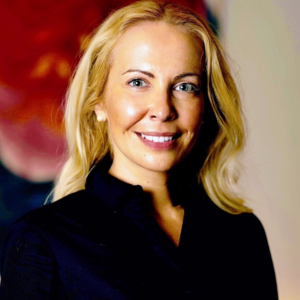
Editorial by Zita Nikoletta Verbényi and Dominik v. Eynern
Legacy Roller Coasters
In recent years, many business families have deliberated what they consider to be a new strategic priority – how to best reinterpret and present their legacies to the wider community. This in turn has raised questions: How can a business family stay true to its core values and keep a relevant, informative and neutral stand? In addition, when should it voice its opinion on a cause deemed important?
Integrity, Values, and Purposiveness
These questions require deliberate considerations. Firstly, re-evaluation exercises exemplify the need for new ways of classifying respective legacies. For example, while there are different ways to build a purposeful cataloguing framework for an entity such as a museum – based on the points of reference, focus, format, goals and various functions it will serve – when it comes to a family legacy, the task is a lot more complex.
The family’s essence needs to come to life through a legacy collection comprised of items that evoke emotions and memories, and are charged with meaning for the family and its history. These can include depictions of milestones and triumphs, as well as various family photographs – but to reflect different eras and keep family members engaged and informed, they need to be continuously updated. Ideally, the legacy collection needs to provide an educational and inspirational ground for both current and upcoming generations, as well as the wider community.
“This exercise in historical consciousness brings the family members to a level of shared understanding and good judgement that they can also share with their wider community.”
In short, business families need to have and show an active and effective historical consciousness: sharing memories, knowledge and tradition; creating an alignment with experiences and historic events; and using this legacy for shared forward-looking purposes. This exercise in historical consciousness brings the family members to a level of shared understanding and good judgement that they can also share with their wider community.
However, while individual memories are the raw material for a coherent family narrative and legacy collection, they are also malleable. As such, it is crucial for family members to engage in collective retrieval and interpretation of the memories if the legacy narrative is to resonate with everyone. Co-creation, using consciousness as a basis, not only helps a family to re-evaluate and re-interpret their legacy but also binds members together.

The Neutral Observer?
Cataloguing a family business legacy touches upon another important issue: the role of the cataloguer, as well as their accidental mistakes and potential biased approaches. Many maintain that they are completely impartial in their conduct, but can the neutral observer really exist? Our behaviour and, therefore, social processes are a result of complex, recursive feedback loops and iterative interactions. However, past social processes are just as relevant by the way of memory reconstruction as social processes anticipated in the future determine our behavioural decisions and mould our perception of the world.
“Intellectual flexibility and valuing different sorts of discourses is the goal…”
Thus, it is unlikely that a cataloguer can have a truly neutral stance. Their perception is biased – involuntarily and intentionally. And when the biases come to conscious awareness, the danger is that we engage in motivational reasoning to justify the biases in an attempt of self-validation. For family businesses to reduce these perceptual biases in relation to their legacy, it is of vital importance to become aware of their existence, engage with the group for reflection, allow for counter-biases and agree on the collective truth.
Using individual judgement and providing possibly unsolicited added value may result in further complications to the catalogue, causing it to become somewhat of a patchwork with missing clues, with likely translation or transliteration-based fallacies. This represents a false equivalency of viewpoints and reasoning. Intellectual flexibility and valuing different sorts of discourses is the goal; not deducting certainty, just fusing historical traits with the family’s thinking and objectives using different types of evaluative sources, which may change over time.

Structural Articulation & Fuzzy Family Rules
Legacy collections expand lived experiences with the collective family intelligence, shared culture, meaning, aligned symbol systems and shared memories. These need to be processed via a deliberate structural articulation by analysing the nexus between the various intertwined layers of family events and characters, and all further legacy traits.
Family members may better understand their legacy by opening up their individual horizons and connecting these with the collective horizon, whilst also adding a layer of interpretation to the formulaic conception of their governing system. History and milestones may be captured easier in stable formations and systematic structures; however, all other legacy recollections need to be woven into the family fabric with careful conceptual understanding. Trying to understand and interpret what we are observing without judgement is critical.
“…When reinterpreting and presenting their legacy, an ‘attractor’ must be established – a strong, orderly centre of gravity towards which the business and individual family members converge.”
Finding the Centre
Not only is (every pursuit of) knowledge subjective, context-dependent and interest-driven; rules are also subjective.
Aristotle refers to fernesis – knowledge that is not univocal or formulaic in its orientation, and yet is rule-governed. The rules that govern fernesis are not precise such as those that govern, for example, geometry; instead, they are ‘fuzzy’ and ‘slippery’, and often subject to interpretation. These ‘soft rules’ are what govern multigenerational families – the rules of engagement, per se. These are guiding rather than determining, encouraging families to reflect on their own perceived concepts of legacy and doing business.
However, this means that family businesses are often chaotic, self-organizing systems with more than three dimensions, and variable synergistic and antagonistic forces. As such, when reinterpreting and presenting their legacy, an ‘attractor’ must be established – a strong, orderly centre of gravity towards which the business and individual family members converge. This provides family members with a sense of agency, unlike a set of geometric rules that are to be followed with deviant behaviours sanctioned.
A strong attractor can serve as a tool to bias thoughts, feelings and behaviours for the good of the family and family business, as well as its legacy and how it is presented to the wider community. Once it is established and internalised, the attractor will keep the social system integrated across contexts and external influences such as marriage or economic crises. Internal affairs as such succession processes will be managed smoothly, and destructive conflicts will be less likely to occur.
Naturally, collective reconsiderations and rethinking have a cost in terms of time and effort, but harnessing all the benefits makes it a worthwhile activity when positioning legacy as a new strategic priority.
“Visionary leaders use the art of foresight to create transformative and sustainable legacies.”
Imaginative Capital & Imaginative Wealth
Multigenerational families have a remarkable competitive advantage through benefitting from the power of hindsight and, therefore, possessing considerable foresight. This foresight is not equal to instinct or a gut feeling; rather, it is as a direct result of learning from multigenerational wisdom, which may help current active members of the family business mitigate risk and make decisions in a proactive way.
Visionary leaders use the art of foresight to create transformative and sustainable legacies. They demonstrate artistic invention and ingenuity, as well as artistic artifice, showcasing unique skillsets in different representations and materials. Such innovators excel at pulling together all the fragmented pieces in their head into something new; something that sticks. If they have a multigenerational family background of previous such leaders, the generational wisdom of innovation and their craft, their legacy marks will be even more powerful, and families will be well equipped to expand further on their long-term horizons.

Zita Nikoletta Verbényi is the Founder and Legacy Aesthete of The Legacy Atelier, a PhD Candidate in Family Business Legacy Interpretations focusing on perception, interpretation, and expectation horizons, narratives, collective intelligence, complex system theory from an artistic perspective, imaginative capital, and how the arts, philosophy, aesthetics, and specifically hermeneutics can help business families reconnect with their legacy and build upon it.
Zita is also a Partner, Head of Family Offices UK, at Stanton Chase, and Founding Member at Family Hippocampus.

Dominik v. Eynern comes from a business family which is now in its 5th generation and he is a founding member of Family Hippocampus. He holds a BSc in Economics and a MSc in finance, worked in the international investment banking industry and co-founded a family office. His research on family dynamics is inspired by insights from cognitive neuroscience, behavioural economics, dynamic complex system theory and chaos theory.









